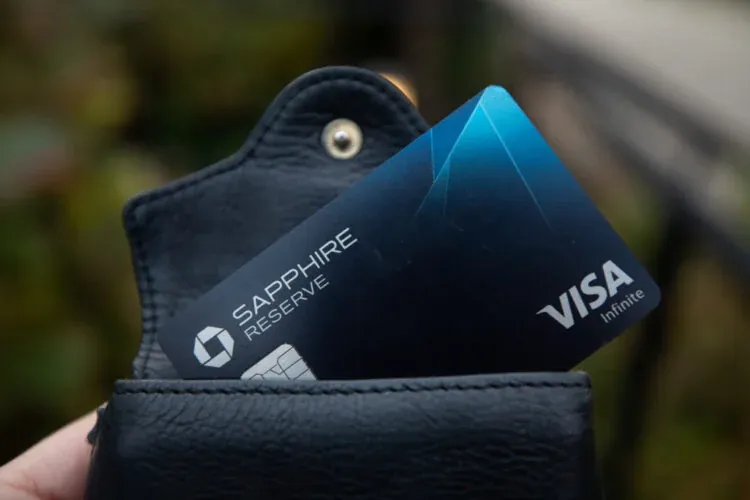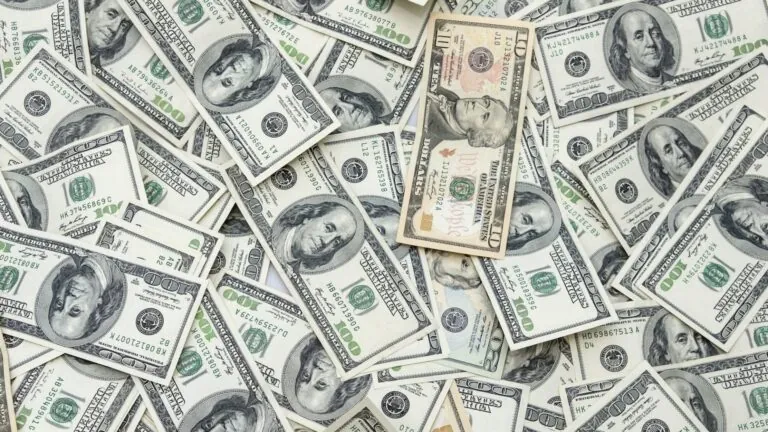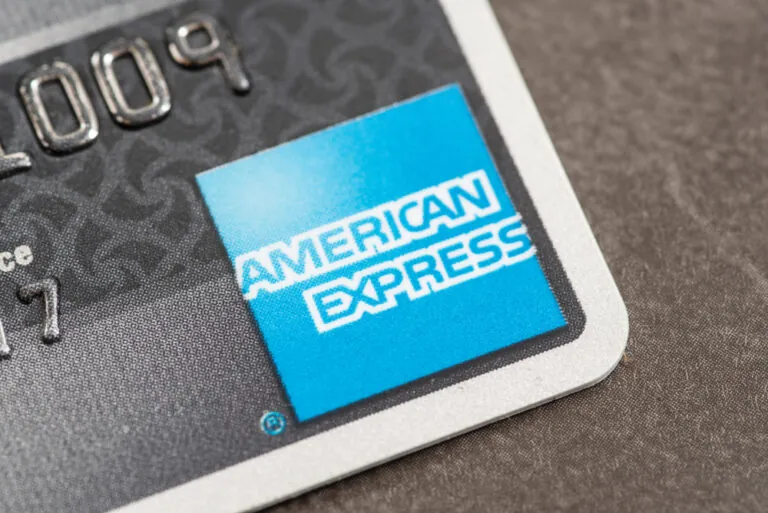Which one is superior: Chase Sapphire Preferred or Reserve?
The Chase Sapphire card is widely recognized as the catalyst for the widespread adoption of travel rewards programs. Even after a decade since its launch, the Chase Sapphire Preferred Card is still one of the most popular travel reward credit cards used today. When the Chase Sapphire Reserve was introduced in 2016, it quickly ran out of metal cards due to the overwhelming demand. With both cards being highly sought after, the question arises as to which one is the better choice. So, let’s delve into the Chase Sapphire Preferred Vs. Reserve debate.
Chase Sapphire Preferred Is More Affordable
Business Insider reported that Chase made significant improvements to the Chase Sapphire Reserve and Chase Sapphire Preferred cards in 2021. Both cards now offer more benefits and added or enhanced bonus categories. Despite these enhancements, the annual fees for the cards remain unchanged at $95 for Preferred and $550 for Reserve. While the Preferred card is notably more affordable than the Reserve card, the latter’s higher annual fee is justifiable as cardholders can enjoy statement credits of up to $300 for travel purchases annually.
By deducting the annual fee, your actual payment for the Reserve card becomes $250 per year. Additionally, you can use the statement credit provided by the Reserve card for various expenses such as hotels, flights, cruises, subway fares, parking tolls, taxis, and more. However, the Chase Sapphire Preferred® card offers $50 in hotel credit, which reduces its net annual fee to $45, resulting in a difference of $205 between the two cards. This is a significant margin, and if you don’t want to spend too much, then the Preferred card is the right choice for you. Nevertheless, you should not make your decision solely based on annual fees. Let’s take a look at the benefits that come with each card.
You Get More Perks with Chase Sapphire Reserve
The disparity in earning rates and perks between the Chase Sapphire cards is quite noticeable. Those who hold the Chase Sapphire Reserve are entitled to a generous $300 travel credit every year, along with trip delay insurance that becomes effective after a brief delay. Additionally, they enjoy access to over 1,300 airport lounges, elite advantages with various car rental companies, and the privilege of making Reserved by Sapphire restaurant reservations.
If you’re a cardholder of the Chase Sapphire Reserve, you’ll get a whopping 10 points per dollar spent on Lyft rides. On the other hand, Chase Sapphire Preferred cardholders can enjoy $50 in annual statement credits on restaurants booked through the travel portal and receive a 10% bonus on all purchases made during the previous year. Not to mention, both cards offer a complimentary DashPass membership which waives delivery fees for orders over $12. However, the Chase Sapphire Reserve card definitely takes the cake when it comes to perks, making the high annual fee of $550 worth it in the end.
You Get a Higher Bonus for Redeeming Reward Points with Chase Sapphire Reserve
Chase’s point redemption programs are remarkably generous, with a range of options available that don’t necessarily involve travel. You’ll usually be able to use your points to purchase airline tickets or receive a cashback (at a rate of one cent per point) via the Chase Travel Portal. Additionally, you can opt to transfer your Chase points to hotels and airlines partnered with Chase through its reward program. However, it’s worth noting that utilizing Chase Sapphire Reserve points for redemption is more profitable than with Chase Sapphire Preferred. For instance, those who purchase airline tickets with the Reserve card receive a 50 percent bonus, while Preferred cardholders only receive a 25 percent bonus.
Chase Sapphire Preferred Does Not Charge You to Add Authorized Users to Your Account
You can easily add authorized users, such as your spouse or child, to your reward credit card account. However, it’s important to note that there is a difference in cost between the two options. With a Chase Sapphire Preferred® Card, adding authorized users is free of charge. On the other hand, if you have a Reserve account, adding authorized users comes with an annual fee of $75. It’s worth noting, though, that each authorized user on a Chase Sapphire Reserve account is entitled to their own Priority Pass Select membership.
Chase Sapphire Reserve Offers More Benefits, But Will You Use Them?
As we have already established, the decision to choose the Chase Sapphire Reserve card over the Preferred card will ultimately depend on whether you will make use of the added benefits. By paying an annual fee of $550, Reserve cardholders gain access to a range of perks, including:
-
- Airport lounge membership and access through Priority Pass Select
- Application fee credit for NEXUS, PreCheck, or Global Entry
- Access to Reserved by Sapphire restaurant reservations
- When they open, access to Chase Sapphire Lounges by The Club
- Waived food deliveries through DoorDash
Chase Sapphire Preferred cardholders miss out on these exclusive perks. Nonetheless, it’s only worth investing in them if you intend to utilize them. If your travels are mostly local and you don’t do it frequently, then shelling out $550 for benefits that you won’t use may not be necessary. Opting for the Chase Sapphire Preferred card, however, comes with a $50 hotel credit and a 10% bonus on every anniversary – advantages that Reserve cardholders don’t enjoy. Ultimately, it’s crucial to scrutinize your spending and travel patterns and weigh the benefits that are most important to you.
You Need to Consider Your Spending Habits on the Offered Bonus Categories
Bank Rate states that the key factor that determines the number of points you accumulate on a credit card is your spending in its bonus categories. Therefore, your spending patterns play a crucial role in selecting the right card for you. The Chase Sapphire Reserve and Preferred cards provide bonus rewards in various categories. To make the right choice, you must consider the categories in which you spend the most. If you frequently spend on car rentals and hotels, the Chase Sapphire Reserve can help you earn sufficient points to justify the high annual fee. However, if you prefer redeeming your rewards on streaming services and online grocery purchases, the Chase Sapphire Preferred might be a better choice.
Are You Interested in Airport Lounge Access?
As a Chase Sapphire Reserve cardholder, you’ll receive a complimentary membership to Priority Pass Select, a global network of over 1,300 airport lounges that allows you access to all member lounges. While the amenities provided will vary depending on the lounge, you can enjoy benefits such as plush seating, complimentary snacks, soft and hard drinks, and private Wi-Fi. Additionally, some airports have restaurants that are part of the network, which will credit a certain amount on your bill for you and your guests. For example, the Cadillac Mexican Kitchen and Tequila Bar and Landry’s Seafood restaurants located at Houston George Bush Intercontinental Airport (IAH) are great options.
According to Afar Magazine, the Chase Sapphire Reserve card offers access to Chase Sapphire Lounges by The Club, which are slated to open in multiple airports by the end of the year. If you enjoy relaxing in airport lounges during your travels, the Reserve card is the perfect fit for you. However, if you don’t anticipate using your Priority Pass membership frequently, you can forego the high annual fee and opt for the Preferred card instead. It’s worth noting that the Priority Pass Select network is more expansive overseas and primarily available in international terminals within the US. If you primarily travel domestically, you may not have access to lounges at all.
Do You Need Trip Delay Insurance?
If you’re a resident of a bustling metropolis such as New York, you’ve likely experienced the frustration of flight delays. These hold-ups are typically due to unforeseeable factors like inclement weather or mechanical problems with the aircraft. Fortunately, Chase has got you covered with its trip delay insurance, which protects you from potential losses incurred during these delays. However, the coverage is more comprehensive with the Chase Sapphire Reserve card, which goes into effect after only six hours or in the event of an overnight delay, while the Preferred option kicks in after twelve hours. If you prioritize having your trip delay insurance kick in sooner rather than later, opting for the Chase Sapphire Reserve card is the safer bet.
What About TSA PreCheck and Global Entry?
Do you want to make your travel experience hassle-free? Well, the answer is simple. Every traveler needs TSA PreCheck and Global Entry or NEXUS, especially for expedited immigration and customs into Canada. With TSA PreCheck, you can access special security lanes at most airports in the US, where you only need to go through a metal detector instead of a full-body scanner. Moreover, you can keep your light jackets, belts, and shoes on and leave your laptops in your bags, making the process faster and more comfortable than regular security.
If you’re a Global Entry member, you’re in luck – you won’t have to queue up at immigration when coming back to the US. Instead, you can simply scan your passport at a self-service booth, which will print out a receipt to be presented to customs. Usually, you can only apply for one program, but with Global Entry, you can also receive TSA PreCheck at an application cost of $100. This is a better deal than only getting TSA PreCheck for $85. So, how does Chase come into play? Well, the Chase Sapphire Reserve card provides applicants with credit for Global Entry, TSA PreCheck, and NEXUS, and reimburses a certain amount of the application fees, making the process easier and more affordable. If you’re not currently enrolled in either program, the Reserve card could be the solution you’re looking for.
Summary: Chase Sapphire Preferred Gives You:
If you’re wondering why you should opt for one Chase Sapphire card over the other, let’s take a closer look at their perks. Firstly, the Chase Sapphire Preferred rewards card boasts:
-
- Affordable Travel Perks: Although you don’t get airport lounge access with Preferred, you do get other important perks like primary auto damage collision coverage and trip interruption or cancellation insurance – all at a relatively low annual fee. If you do not care about sipping wine at an airport lounge before your flight, this card is enough.
- Substantial Welcome Bonus: New Sapphire Preferred cardholders earn $60,000 bonus points once they purchase qualifying items worth $4,00 within the first 3 months of opening their accounts. This is one of the most generous welcome packages available today.
- A 25% Point Bonus: All your Chase Sapphire Preferred earnings come with a 25 percent bonus when redeemed through the Chase Travel Center for travel or the Pay Yourself Back feature of qualifying purchases. This incredible feature offers huge savings.
- Low Annual Fee: Of course, one of the biggest reasons to choose Sapphire Preferred is its low annual fee of $95. You get excellent perks without breaking the bank!
Chase Sapphire Reserve Gives You:
If you are in search of a card that meets specific requirements, then the Chase Sapphire Reserve is the perfect option. It is best suited for individuals who desire:
-
- More Extensive Protections: The Sapphire Reserve card offers trip cancellation or interruption insurance coverage of up to $20,000 per trip and $10,000 per person for every non-refundable prepaid travel expense. You also get extended warranty coverage, return protections, lost luggage reimbursement, purchase protection, and primary auto collision damage coverage. You don’t get this level of coverage with Sapphire Preferred.
- Premium Benefits: Reserve gets you $300 in credit for eligible purchases and travels every cardholder year, fee reimbursement for TSA PreCheck or Global Entry application, lounge access through Priority Pass Select, and benefits at select hotels and car rentals.
- 50% Point Bonus: Chase ups the ante on this card from Preferred’s 25 percent to a whopping 50 percent, adding value to your reward earnings.
- Higher Travel Earnings: Chase Sapphire Reserve cardholders earn 10 points per dollar on car rentals and hotels and 5 points per dollar on airline tickets.
Can You Get Both Cards?
Regrettably, Chase adheres to a ‘One Sapphire Card’ regulation that restricts you from being eligible for a Chase Sapphire Reserve card if you currently possess a Sapphire Preferred and vice versa. However, you have the option to downgrade your Sapphire card to a Chase Freedom Unlimited or Chase Freedom Flex and then apply for the Sapphire card of your preference after a 48-month waiting period. Moreover, if you fulfill the following requirements, you are not eligible for a different Sapphire card:
-
- You have opened five or more credit cards within the last 24 months, otherwise called the Chase 5/24 rule.
- You have earned a bonus on any Sapphire card within the last 48 months.
Conclusion
In the end, determining the superior option between Chase Sapphire Preferred and Reserve boils down to your annual fees, travel requirements, and spending habits. Are you comfortable with paying a higher annual fee? Do you require the extra bonus categories and perks that come with this elevated fee? Do the rewards offered align with your spending habits? By providing answers to these questions, you can discover the card that best suits your needs.
Read More:







